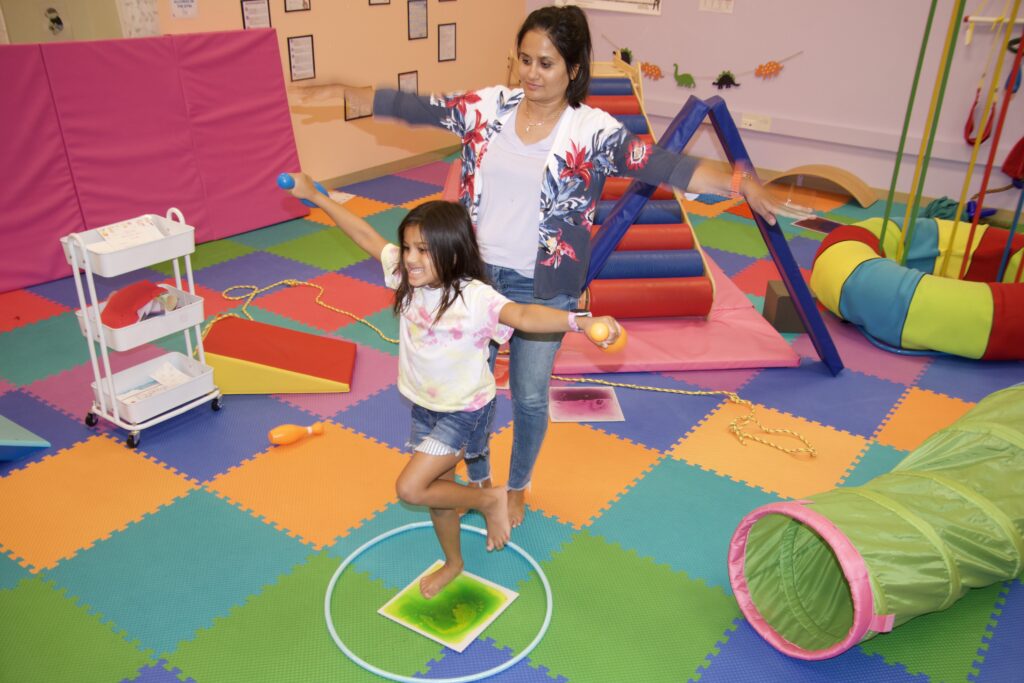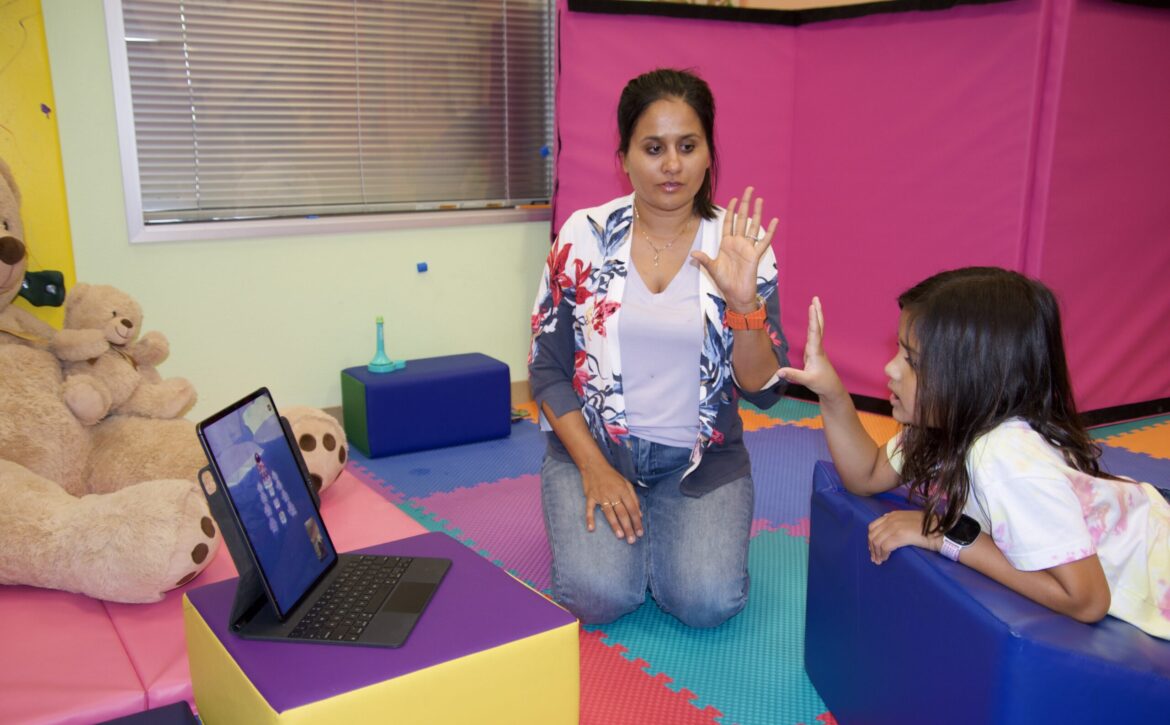Tele-Health FAQs
What is Virtual OT and Speech Therapy?
Virtual Occupational Therapy (OT) and Speech Therapy (SLP) are live, online therapy sessions conducted by licensed pediatric therapists. These sessions take place from the comfort of your home, using a secure and easy-to-use platform, and are designed to help children improve their motor skills, speech, language, communication, and overall development.
Why is Virtual OT and Speech Therapy Effective?
Virtual therapy has been shown to be highly effective for a wide range of children, offering numerous benefits:
- Consistency of Care: Virtual therapy allows children to continue therapy without disruption—whether you’re unable to visit a clinic due to distance, scheduling conflicts, or other reasons. Consistency is key in achieving progress.
- Convenience and Flexibility: With virtual therapy, there’s no travel time or waiting in a clinic. You can schedule sessions at times that fit your family’s routine, making it easier to commit to regular therapy.
- Child-Centered and Fun: Our pediatric therapists specialize in engaging children using interactive and playful activities tailored to each child’s unique needs. Virtual platforms allow us to incorporate games, sensory activities, and creative play to keep kids engaged and motivated.
- Research-Backed: Studies have shown that virtual therapy, when implemented correctly, can deliver comparable results to in-person therapy. It allows for personalized interventions that help children meet their goals—whether for motor skills, language, communication, or behavior.
- Parent and Caregiver Involvement: In virtual therapy, parents and caregivers play a more active role. This hands-on involvement makes therapy more effective by allowing parents to apply learned techniques at home, increasing the impact and frequency of practice outside the therapy session.
What Makes Our Virtual Therapy Sessions Unique?
At OT Park, we incorporate a variety of interactive, engagement-driven tools to make virtual therapy as effective—and fun—as possible for children:
- Green Screen Approaches: Our therapists use green screen technology to create immersive environments that make therapy sessions feel more dynamic and engaging. Whether it’s a virtual jungle or underwater adventure, this helps children feel like they’re actively participating in their therapy rather than just watching.
- Zoom Whiteboards & Visuals: We use Zoom whiteboards and visual aids to reinforce learning. These tools help children actively participate by drawing, writing, and engaging directly with the material.
- YouTube and Videos: Videos are powerful learning tools, and we incorporate educational videos and fun clips to keep children engaged while teaching key skills in language, speech, and motor functions.
- AI-Based App: Most importantly, we use an AI-based app that can be utilized at home. This app provides children with interactive tasks and activities, helping reinforce therapy sessions between appointments. The app tracks progress and gives feedback, ensuring therapy continues to be productive, even outside of scheduled sessions.
What Equipment Do I Need for Virtual Therapy?
To get started with virtual OT and Speech Therapy, you’ll need:
✔ A computer, laptop, or tablet with a camera and microphone
✔ A stable, high-speed internet connection
✔ A quiet space with minimal distractions for your child to participate
✔ An adult facilitator (parent or older sibling) to assist with setup, ensure your child stays on track, and provide support when necessary
Once scheduled, we’ll send you a link to the secure virtual session ahead of time for easy access.
What If My Child Is Too Young or Has Trouble Focusing?
Not a problem! Our therapists are highly skilled at engaging young children and children with various challenges. We use fun and interactive techniques—from visual supports to movement activities—to make therapy sessions engaging and productive.
As a parent or caregiver, you will be given guidance on how to support your child during the session and help them practice daily at home. Active participation ensures that therapy remains fun, focused, and effective.
Will My Insurance Cover Virtual OT and Speech Therapy?
At OT Park, we accept United Healthcare and Kaiser for insurance coverage. If you’re with another provider, we can discuss other payment options, as many families are finding insurance companies are increasingly covering virtual therapy services.

OT Park shares HIPAA compliant AI home plans for continuous weekly practice. OT Park is the first place to use AI for SLP and OT.
OT Park Telehealth is Amazing!! As we just don't sit in front of screens, we actually "DO" activities !
What to Do Next?
We are excited to bring quality therapy directly to your home! To get started, simply reach out to us at:
📞( 669)-888-3636
📧 admin@otpark.com
Visit our website www.otpark.com to learn more.
Follow us on Social Media for more insights, tips, and updates on pediatric OT and Speech Therapy!
We can’t wait to help your child thrive through the power of virtual therapy! 🌟






